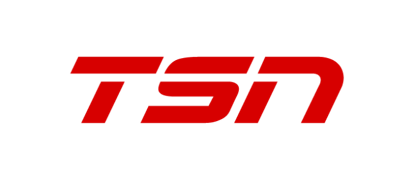The United States, Canada and Finland medalled one year ago at the Olympic Winter Games.
photo: Andre Ringuette / HHOF-IIHF Images
Even the most cynical journalist would be hard-pressed to disagree that this is the most exciting time in women’s hockey history.
The profile, popularity, and future prospects of the sport have skyrocketed in the last year alone. And the countdown to the 2019 IIHF Ice Hockey Women’s World Championship in Espoo, Finland (4 to 14 April) is in full swing.
So we convened a panel with three influential women’s hockey writers from the top nations that medalled at the 2018 Olympics, and asked them to weigh in on some timely topics. The opinions expressed by the writers are their own and do not reflect any official views of the IIHF.
Marisa Ingemi (USA) covers hockey for the Boston Herald. Previously, she worked as the play-by-play voice of the Boston Pride and covered the NWHL for espnW.
Carol Schram (Canada) is a regular contributor to SportsMoney at Forbes.com, where she has interviewed key women’s hockey figures like Jennifer Botterill, Monique Lamoureux-Morando, A.J. Mleczko, and NWHL commissioner Dani Rylan. She has also written about hockey for such outlets as the New York Times, the Canadian Press, and The Hockey News.
Kirsi Teiskonlahti (Finland) is a sports journalist who has covered hockey for six years. She works for Yle, Finland’s national broadcaster, and writes women’s hockey stories every week for Yle’s web site.
Who are some players you’ll be watching closely at the 2019 IIHF Ice Hockey Women’s World Championship?
Carol Schram: Heading into the tournament, I’m watching for updates on the health of Canadian captain Marie-Philip Poulin and goaltender Shannon Szabados. Poulin dressed but didn’t play in the CWHL’s Clarkson Cup final due to a lower-body injury that had already dragged on for a month, and Szabados missed the NWHL’s Isobel Cup final, also with a lower-body injury. If Poulin and/or Szabados are unavailable or not playing at 100 percent in Espoo, that’s a massive blow to Canada’s chances of earning its first Women’s Worlds gold since 2012.
Marisa Ingemi: Looking at Team USA, I’m interested to see what kind of a leap Cayla Barnes takes this time around. Additionally, Jesse Compher from Boston University had a stellar season and has started to get some recognition, so this is a great opportunity for her to take the next step to being one of the best hockey players in the world.
Kirsi Teiskonlahti: I’m always interested in new or young players. One budding Lioness I’m really looking forward to seeing in Espoo is Elisa Holopainen, the Best Forward from the U18 Women’s Worlds. She’s just 17, and she was also on fire during the Naisten Liiga playoffs with 11 goals in 8 games. I’m excited to see Canada’s Loren Gabel, who had another incredible season with Clarkson University and just won the Patty Kazmaier Award. As Marisa mentioned, it’ll be great to check out a talented defender like Cayla Barnes here in Finland. Among the new teams at the Worlds, I’m looking forward to watching French forward Chloe Aurard, who was one of Northeastern University’s top scorers this season.
What is the significance of having 10 national teams competing at the Women’s Worlds and the 2022 Olympics for the first time?
Ingemi: Exposure all around the world is so important, because that not only means more people will show an interest in the sport, but more girls will start playing hockey and continue the pipeline of talent globally.
Schram: The more, the merrier! While Canada and the U.S. still dominate the medal standings, the skill gap is shrinking within the next tier of teams. Giving more teams the opportunity to participate in top-level competition should help increase the profile of women’s hockey in their respective nations, and help build skill as more women get to test themselves against the world’s best.
Teiskonlahti: It’s important for women’s hockey to grow bigger. It’s really interesting to see more teams! I hope this change gets countries more invested in women’s hockey.
What does the future for professional women’s hockey in your country look like?
Teiskonlahti: There’s a lot of work to be done in Finland, but the situation is slowly getting better. Right now, Naisten Liiga players need to pay to play hockey, and need to work or study while they’re playing. However, the Finnish Ice Hockey Association is focusing more on women’s hockey. Finland is trying to get more girls playing, so the national team can have more players to choose from. Finnish national team members get the Ministry of Education and Culture’s highest available grant: 10,000 Euros per player. Some Naisten Liiga teams share the same logo with a men’s Liiga team, although the women’s and men’s teams aren’t under the same company. However, this year almost every women’s team got help from their male counterparts, like advertising the games together. With some clubs, the company behind the men’s team also helped the women’s team, often volunteer-run, to get sponsors. Some companies even wanted to support only the women’s team. Overall, we need more cooperation between men’s and women’s teams. Men have a lot of resources, but women don’t yet. In Sweden, these things are at a whole different level. Nowadays Finland is losing talented players to Sweden and the NCAA.
Ingemi: Speaking for the NWHL, they just took a huge step this season after getting over that third-year hump as a fledgling professional sports league. The Minnesota Whitecaps were an amazing addition. We also saw the Buffalo Beauts taking it up a notch with their Sabres partnership and the Boston Pride gaining an NHL partnership. Everyone talks about #OneLeague, but what gets lost sometimes is the individual efforts that have grown women’s hockey from everyone at a grassroots level. Regardless of what happens elsewhere, the NWHL has established a strong foundation.
Schram: #OneLeague seems like the most desirable option, but there’s still no roadmap for how to make that happen. This season, the CWHL took some positive steps in Jayna Hefford’s first year as commissioner, attracting top-tier U.S. talent like Hilary Knight and Brianna Decker and increasing the league’s broadcast profile. However, the NWHL is also strengthening its business model Stateside, and is in growth mode. I wouldn’t be surprised to see further expansion after the Whitecaps drew such strong crowds en route to a championship in their first NWHL season. Two leagues may dilute the talent pool, but they also offer more jobs and more freedom of choice for players. With any luck, an increasing profile will cause gains in sponsorship dollars and help grow the budget of the CWHL and its franchises. But I don’t expect we’ll see the #OneLeague merger any time soon.
What are the keys to increasing media coverage of women’s hockey?
Ingemi: It’s up to media outlets to commit to covering women’s sports, which comes from something as simple as understanding the newsmakers tell us what’s important. Covering women’s sports seriously creates readers on its own.
Teiskonlahti: The editorial offices must be supportive for journalists to write about women’s sports, even if those stories don’t get as many readers as stories about men’s sports – yet. The editors need to be patient. Since there are a lot of interesting stories in women’s hockey, teams and national leagues could also help out journalists a bit, and send more tips about records, players’ interesting backgrounds and so on. And of course, the sport needs more viewers for media coverage to increase.
Schram: When I interviewed NHL Network host Jamie Hersch in early March before her network’s second-annual all-female edition of NHL Now, she emphasized two key ideas. First, shows like hers help normalize the idea of having women in the hockey world, whether they’re career broadcasters like Hersch or players-turned-analysts like Jennifer Botterill or Kendall Coyne Schofield. Second, moments like Coyne Schofield’s lap around the ice at January’s NHL All-Star Skills Competition have been massively important at promoting the game in front of the men’s hockey audience. “I think it’s just as important for men to be involved in promoting women’s hockey,” Hersch said. “So hearing Connor McDavid sing her praises, hearing Auston Matthews – some of the biggest stars on the men’s side of the game talking about how amazing she was in the competition – that was just a real galvanizing force to bring the spotlight on women’s hockey and show that the gap between men and women is shrinking.” The women can add another watershed moment to their sport’s highlight reels if they deliver a gold medal game in Espoo like last year’s U.S.-Canada thriller in PyeongChang.
Who will win the medals at the 2019 Women’s Worlds?
Teiskonlahti: I think the top three teams from the Olympics will be strong again this spring. So the U.S., Canada, and Finland, but not necessarily in that order.
Ingemi: As the host nation, Finland has tremendous upside to medal, while Canada and the U.S. are sure to duke it out at the top once again.
Schram: I’ll say U.S. gold, Canada silver, and Finland bronze.
The profile, popularity, and future prospects of the sport have skyrocketed in the last year alone. And the countdown to the 2019 IIHF Ice Hockey Women’s World Championship in Espoo, Finland (4 to 14 April) is in full swing.
So we convened a panel with three influential women’s hockey writers from the top nations that medalled at the 2018 Olympics, and asked them to weigh in on some timely topics. The opinions expressed by the writers are their own and do not reflect any official views of the IIHF.
Marisa Ingemi (USA) covers hockey for the Boston Herald. Previously, she worked as the play-by-play voice of the Boston Pride and covered the NWHL for espnW.
Carol Schram (Canada) is a regular contributor to SportsMoney at Forbes.com, where she has interviewed key women’s hockey figures like Jennifer Botterill, Monique Lamoureux-Morando, A.J. Mleczko, and NWHL commissioner Dani Rylan. She has also written about hockey for such outlets as the New York Times, the Canadian Press, and The Hockey News.
Kirsi Teiskonlahti (Finland) is a sports journalist who has covered hockey for six years. She works for Yle, Finland’s national broadcaster, and writes women’s hockey stories every week for Yle’s web site.
Who are some players you’ll be watching closely at the 2019 IIHF Ice Hockey Women’s World Championship?
Carol Schram: Heading into the tournament, I’m watching for updates on the health of Canadian captain Marie-Philip Poulin and goaltender Shannon Szabados. Poulin dressed but didn’t play in the CWHL’s Clarkson Cup final due to a lower-body injury that had already dragged on for a month, and Szabados missed the NWHL’s Isobel Cup final, also with a lower-body injury. If Poulin and/or Szabados are unavailable or not playing at 100 percent in Espoo, that’s a massive blow to Canada’s chances of earning its first Women’s Worlds gold since 2012.
Marisa Ingemi: Looking at Team USA, I’m interested to see what kind of a leap Cayla Barnes takes this time around. Additionally, Jesse Compher from Boston University had a stellar season and has started to get some recognition, so this is a great opportunity for her to take the next step to being one of the best hockey players in the world.
Kirsi Teiskonlahti: I’m always interested in new or young players. One budding Lioness I’m really looking forward to seeing in Espoo is Elisa Holopainen, the Best Forward from the U18 Women’s Worlds. She’s just 17, and she was also on fire during the Naisten Liiga playoffs with 11 goals in 8 games. I’m excited to see Canada’s Loren Gabel, who had another incredible season with Clarkson University and just won the Patty Kazmaier Award. As Marisa mentioned, it’ll be great to check out a talented defender like Cayla Barnes here in Finland. Among the new teams at the Worlds, I’m looking forward to watching French forward Chloe Aurard, who was one of Northeastern University’s top scorers this season.
What is the significance of having 10 national teams competing at the Women’s Worlds and the 2022 Olympics for the first time?
Ingemi: Exposure all around the world is so important, because that not only means more people will show an interest in the sport, but more girls will start playing hockey and continue the pipeline of talent globally.
Schram: The more, the merrier! While Canada and the U.S. still dominate the medal standings, the skill gap is shrinking within the next tier of teams. Giving more teams the opportunity to participate in top-level competition should help increase the profile of women’s hockey in their respective nations, and help build skill as more women get to test themselves against the world’s best.
Teiskonlahti: It’s important for women’s hockey to grow bigger. It’s really interesting to see more teams! I hope this change gets countries more invested in women’s hockey.
What does the future for professional women’s hockey in your country look like?
Teiskonlahti: There’s a lot of work to be done in Finland, but the situation is slowly getting better. Right now, Naisten Liiga players need to pay to play hockey, and need to work or study while they’re playing. However, the Finnish Ice Hockey Association is focusing more on women’s hockey. Finland is trying to get more girls playing, so the national team can have more players to choose from. Finnish national team members get the Ministry of Education and Culture’s highest available grant: 10,000 Euros per player. Some Naisten Liiga teams share the same logo with a men’s Liiga team, although the women’s and men’s teams aren’t under the same company. However, this year almost every women’s team got help from their male counterparts, like advertising the games together. With some clubs, the company behind the men’s team also helped the women’s team, often volunteer-run, to get sponsors. Some companies even wanted to support only the women’s team. Overall, we need more cooperation between men’s and women’s teams. Men have a lot of resources, but women don’t yet. In Sweden, these things are at a whole different level. Nowadays Finland is losing talented players to Sweden and the NCAA.
Ingemi: Speaking for the NWHL, they just took a huge step this season after getting over that third-year hump as a fledgling professional sports league. The Minnesota Whitecaps were an amazing addition. We also saw the Buffalo Beauts taking it up a notch with their Sabres partnership and the Boston Pride gaining an NHL partnership. Everyone talks about #OneLeague, but what gets lost sometimes is the individual efforts that have grown women’s hockey from everyone at a grassroots level. Regardless of what happens elsewhere, the NWHL has established a strong foundation.
Schram: #OneLeague seems like the most desirable option, but there’s still no roadmap for how to make that happen. This season, the CWHL took some positive steps in Jayna Hefford’s first year as commissioner, attracting top-tier U.S. talent like Hilary Knight and Brianna Decker and increasing the league’s broadcast profile. However, the NWHL is also strengthening its business model Stateside, and is in growth mode. I wouldn’t be surprised to see further expansion after the Whitecaps drew such strong crowds en route to a championship in their first NWHL season. Two leagues may dilute the talent pool, but they also offer more jobs and more freedom of choice for players. With any luck, an increasing profile will cause gains in sponsorship dollars and help grow the budget of the CWHL and its franchises. But I don’t expect we’ll see the #OneLeague merger any time soon.
What are the keys to increasing media coverage of women’s hockey?
Ingemi: It’s up to media outlets to commit to covering women’s sports, which comes from something as simple as understanding the newsmakers tell us what’s important. Covering women’s sports seriously creates readers on its own.
Teiskonlahti: The editorial offices must be supportive for journalists to write about women’s sports, even if those stories don’t get as many readers as stories about men’s sports – yet. The editors need to be patient. Since there are a lot of interesting stories in women’s hockey, teams and national leagues could also help out journalists a bit, and send more tips about records, players’ interesting backgrounds and so on. And of course, the sport needs more viewers for media coverage to increase.
Schram: When I interviewed NHL Network host Jamie Hersch in early March before her network’s second-annual all-female edition of NHL Now, she emphasized two key ideas. First, shows like hers help normalize the idea of having women in the hockey world, whether they’re career broadcasters like Hersch or players-turned-analysts like Jennifer Botterill or Kendall Coyne Schofield. Second, moments like Coyne Schofield’s lap around the ice at January’s NHL All-Star Skills Competition have been massively important at promoting the game in front of the men’s hockey audience. “I think it’s just as important for men to be involved in promoting women’s hockey,” Hersch said. “So hearing Connor McDavid sing her praises, hearing Auston Matthews – some of the biggest stars on the men’s side of the game talking about how amazing she was in the competition – that was just a real galvanizing force to bring the spotlight on women’s hockey and show that the gap between men and women is shrinking.” The women can add another watershed moment to their sport’s highlight reels if they deliver a gold medal game in Espoo like last year’s U.S.-Canada thriller in PyeongChang.
Who will win the medals at the 2019 Women’s Worlds?
Teiskonlahti: I think the top three teams from the Olympics will be strong again this spring. So the U.S., Canada, and Finland, but not necessarily in that order.
Ingemi: As the host nation, Finland has tremendous upside to medal, while Canada and the U.S. are sure to duke it out at the top once again.
Schram: I’ll say U.S. gold, Canada silver, and Finland bronze.




